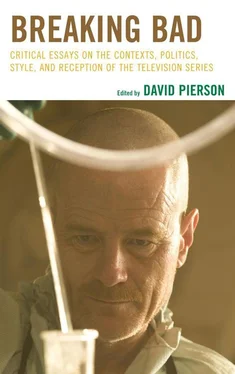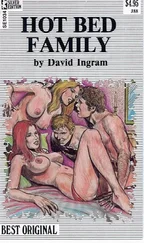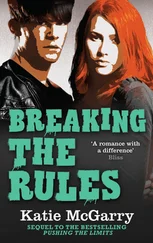NEO-LIBERALISM, THE BORDER, AND RACIALIZED DRUG POLICY
The U.S.-Mexico border has long been the setting for America’s longest war—the drug war. The first instance of the border drug wars began in 1969 when the Nixon Administration enacted “Operation Intercept,” which led to the shutting down the border with Mexico. The operation did little to decrease the supply of drugs coming across the border and was only successful at exposing the economic interdependence of U.S.-Mexico border communities. In the early 1980s, the Reagan administration launched its massive “War on Drugs.” The central goal of the war was to block the tide of cocaine coming into the United States through the Caribbean from Columbia. The Columbians countered by finding an alternative route into the United States through the large, open border with Mexico. In Mexico, the Columbians found a willing partner in Miguel Felix Gallardo, a well-known drug smuggler who consolidated many of the small-time drug smugglers in the 1960s and 1970s into a single operation and controlled much of the illegal drug trade on the border. Internal organizational conflicts in Mexico eventually led to the formation of the modern drug cartel. Mexico’s four major drug cartels have the financial and technical resources to match and even out-maneuver American and Mexican law enforcement. Tony Payan (2006) maintains that the war on drugs and neo-liberal free trade policies, like NAFTA, have only strengthened the positions of the cartels. NAFTA has allowed the cartels to use the millions of border truck crossings to effectively smuggle and distribute their drugs throughout the continental United States. Almost two decades later, NAFTA’s promise to help Mexico build a viable, middle-class never happened. Migration out of Mexico has doubled and because of a tight labor market, wages have been stagnant on both sides of the border (Payan).
The 1980s “War on Drugs” was not justified. Since marijuana and cocaine use actually declined in the late 1970s and the “supply-reduction approach” to drug use had a long history of failure in the United States, there was no rational reason for Reagan’s escalated drug war. Reagan’s neoliberal drug policies and their enforcement ended up disproportionally targeting African Americans living in economically depressed neighborhoods in large urban centers. The policies reinforced fears and concerns among Americans about the city’s “underclass,” who are believed to be socially and morally mired in an endless cycle of drug abuse, poverty, and welfare dependency. Because these areas were already dense in police presence, it was easier to spot drug trafficking and it was easier to make arrests and convictions of young drug suspects who did not have the financial and legal resources to fight their convictions. These areas were deemed easier to patrol and make arrests than the city’s high-rise apartments or the outlying suburban communities (Wacquant).
The history and growth of U.S. drug prohibition laws is intimately linked to particular ethnic and racial groups. The first drug prohibition law, the Opium Exclusion Act of 1909, banned the importation of opium for smoking, but not for medicinal uses. Congress, in making the act, argued that the importation of opium for non-medicinal consumption as part of a Chinese plan to weaken America. Later, African Americans were closely identified with cocaine use and cocaine possession was criminalized because southern politicians feared that African American “cocaine users might become oblivious of their prescribed bounds and attack white society” (Schneider 1998, 434). Congress also criminalized marijuana possession based on the fears that it was primarily being used by Mexican immigrants and it served as “a source of crime and deviant behavior.” Cathy Schneider (1998) argues that the most passionate support for U.S. drug prohibition laws has been based on the fears associated with a particular drug’s effect on a specific minority group. For instance, Latino/a Americans living in the Southwest were believed to be drawn to violent behavior by smoking marijuana (Schneider). Breaking Bad reinforces the association between Latino/a Americans, illegal drug use, drug trafficking, and violent behavior. In the episode “A No-Rough-Stuff-Type Deal” (3/9/08), for example, Tuco snorts a sample of Walt’s meth to test its potency, and then, without much provocation, viciously beats one of his own men nearly to death. Also, Tuco’s Mexican “cousins” are a pair of cold-blooded, cartel assassins who cut off Tortuga’s head with a machete and murder a half dozen of their fellow Mexicans who recently crossed the U.S.-Mexico border.
Most neo-liberal drug policies are popular and widely accepted among people because they have the appearance of social neutrality. Todd Gordon (2006), in examining Canada’s neo-liberal drug policies, argues that, despite their neutral appearance, these drug policies do affect and are often aimed at minority populations. He adds that racialized drug policies are not driven by overt racism (Gordon). Breaking Bad , however, does suggest that some law enforcers may harbor racist attitudes. Hank frequently reveals his deep-seated, racist attitudes toward Latinos and Latina/o culture. In the pilot episode, for instance, Schrader makes a twenty-dollar bet with Gomez, his DEA partner, that the suspect in a meth raid is “a beaner.” In the episode “…And the Bag’s in the River” (2/10/08), when Schrader comes across a hydraulic suspension device in a Latino drug informant’s low-rider car, he laments to Gomez about the precipitous decline in Latino culture.
Neo-liberal drug policies are not predicated on the tacit fear-of-the-Other-syndrome among white citizens. Instead, Gordon (2006) claims that racialized drug policies are rooted in the bourgeois order and its systemic moralistic character, which involves policing and maintaining the dominant, normative moral order through imposing market relations on minority communities. Law enforcement is charged with eradicating any social alternatives, like drug trafficking, which would compete with the capitalist order. Ironically, the Mexican drug cartels and Latino/a American drug smugglers are completely immersed in capitalist relations. Payan (2006) says that the drug cartels follow the “laws of the market.” Since drug trafficking is an illegal market, the cartels are unable to use legal remedies to settle market competition and internal disputes. Violence is just one of many options (e.g., negotiation, profit-sharing) available to cartels in their business operations (Payan 868). Breaking Bad illustrates how cartels and drug dealers adhere to capitalist relations. Gus asks a Mexican drug cartel to delay their revenge killing of Walt for Tuco’s death so that he can complete his business agreement with Walt to pay him three-million-dollars for manufacturing three months’ worth of meth. Later, Gus impresses Walt with his ability to masterly out-maneuver and eliminate his chief business rival, a Mexican drug cartel. Despite his efforts to be a successful drug producer and avoid the brutalities of the criminal drug economy, Walt eventually finds himself pitted against Gus whom he believes wants to kill him. As with the characters in The Wire , Walt and Jesse’s freedom is always illusive and they are invariably circumscribed within the institutional boundaries of a neoliberal society.
Following in the tradition of Beck and Byers and Johnson’s work on The Wire and C.S.I. , this study explores the intersections between contemporary neoliberal discourses and policies, and television fictional dramas. As with neo-liberalism, American cable TV programming is dynamic in form and expressive of popular discourses in American society. John Fiske (1984) argues that popular TV programs are popular because there is an “easy fit between the discourses of the text” and the discourses that are drawn on by the audience to express and make sense of their social experiences (168). This study asserts that neo-liberalism is one of the central discourses in Breaking Bad . While neo-liberalism can be an abstract, difficult concept to comprehend, the fictional series makes it accessible and manifest through its main characters and their intense narrative situations. Breaking Bad ’s criminal meth culture not only presents opportunities for Walt to flex his entrepreneurial muscles, it exemplifies the harsh brutalities, risk/benefit calculations, and winner-take-all ethos best associated with neo-liberalism. Walt’s transformation from a dying, emasculated public school teacher to a self-confident, aggressive drug lord attests both to the seductive power and the dangers of a neoliberal lifestyle where there can only be winners and losers. Even when Walt’s cancer goes into remission and he has amassed plenty of capital, he still wants to continue to cook meth.
Читать дальше












